How Do You Beat the Patriots? The Texans Have an Idea of How To Solve That Problem
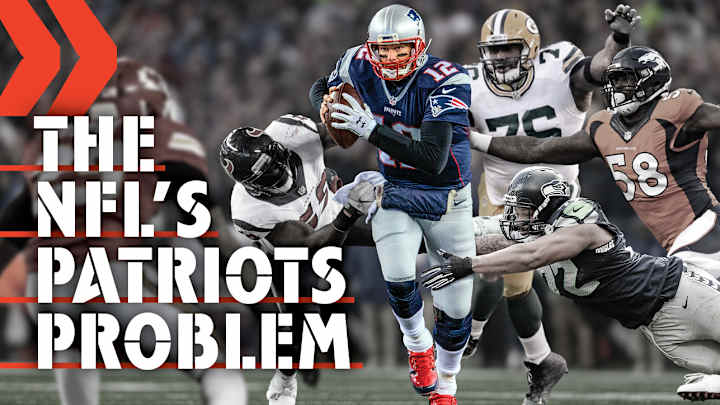
“After that night we knew…” begins Texans outside linebacker Whitney Mercilus. He pauses to search for the right words. “We knew we were better.”
Mercilus makes this assessment from his team’s training camp at the Greenbrier resort in West Virginia, surrounded by densely forested hills, 58 miles from the nearest Starbucks. He’s talking about last season’s divisional-round playoff game between Houston and New England, and he’s comparing his defense to the Patriots’ offense. “We could’ve done a lot more than we did that night,” Mercilus says.
Scary thought. The Texans’ defense, which in 2016 ranked No. 1 in terms of yards allowed (301.3 per game), went into Foxborough in January and gave Tom Brady & Co. fits. A few uncharacteristic, out-of-structure downfield completions ultimately left Brady with a respectable 287 yards passing and propelled the eventual Super Bowl LI winners to a 34–16 victory—but the score had been surprisingly closer, 24–16, early in the fourth quarter when Houston quarterback Brock Osweiler threw the second of three interceptions that eventually cost his team the game. Brady dropped back 40 times that night and connected on only 18 passes, his worst completion percentage (47.4%) in 34 career playoffs games. Afterward, Patriots coach Bill Belichick warned, “We have to play better, we have to coach better . . . or there won’t be much left in our season.”
Privately other coaches around the league would later say that they were surprised how poorly New England handled Houston’s pass-rush scheme that evening. A telling snapshot came at 6:06 in the second quarter, when the Patriots faced third-and-six from the Texans’ 33-yard line. Brady was in shotgun. Opposite him, five Houston defenders lined up along the line of scrimmage. On the edges, outside of each offensive tackle (in a wide-9 position), were linebackers Brian Cushing and Benardrick McKinney. In the B gaps, between New England’s guards and tackles (in a 3 technique), were defensive linemen Jadeveon Clowney and Antonio Smith. Mercilus stood directly over center David Andrews.
At the snap, only Clowney, Smith and Mercilus rushed; Cushing and McKinney dropped into shallow coverage. The QB now had eight pass defenders to sort through. But before Brady could get into his progressions he was engulfed by Mercilus, who’d easily spun past Andrews, an undrafted second-year center with middling size. The Texans had dropped into their “max” coverage, and still they got a premier pass rusher one-on-one against an overmatched lineman. They’d done the same thing earlier in the game, when Mercilus’s pressure had created a sack for Cushing.
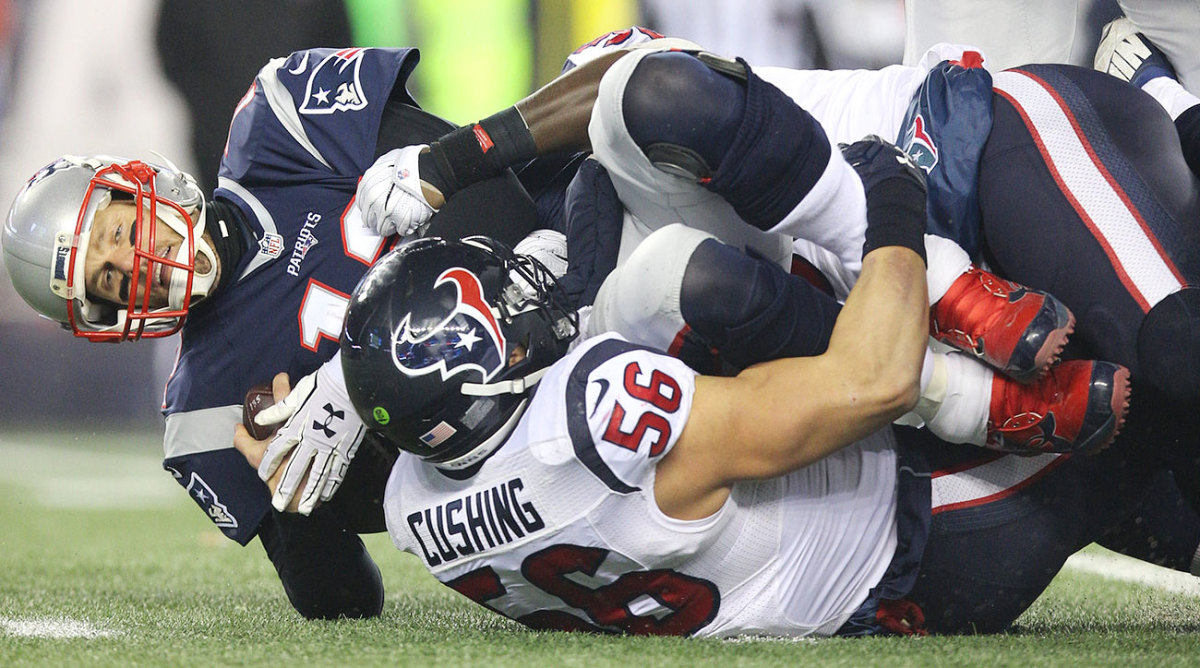
Brady’s long evening—18 pressures, eight hits, two sacks—and the Texans’ near upset all stemmed from Houston’s relentless use of a five-man front, creating a quintet of intriguing one-on-one matchups with the offensive linemen. It’s a concept that defenses have long used in running situations but that has only recently evolved into a prominent passing down tactic. “That front allows me to use my ability against a lesser athlete than myself,” says Mercilus, who since being drafted in the first round out of Illinois in 2012 has grown into one of the league’s most versatile pass rushers. “There are athletic offensive linemen out there, but if you match them up with somebody who’s quicker and smaller, that’s where you change the game. And that’s what we are, a matchup defense.”
Therein lies the beauty of the five-man front, which Houston has come to call the “diamond”: Not only did the Texans force the Patriots to pass-block one-on-one, they also got to dictate those matchups.
Ultimately, Mercilus’s sack was just one moment; it had little bearing on the 2016 season. The Texans still watched Super Bowl LI as spectators. But the ingredients of that play—and many others like it that evening—hint at a recipe for upending the reigning champions. J.J. Watt is back on the field after a back injury landed him on IR last September. Clowney continues to blossom. Mercilus is in his prime. The diamond front, specifically in Houston, represents the NFL’s best chance of dethroning Brady and the Patriots.
Sports Illustrated 2017 NFL Preview Covers
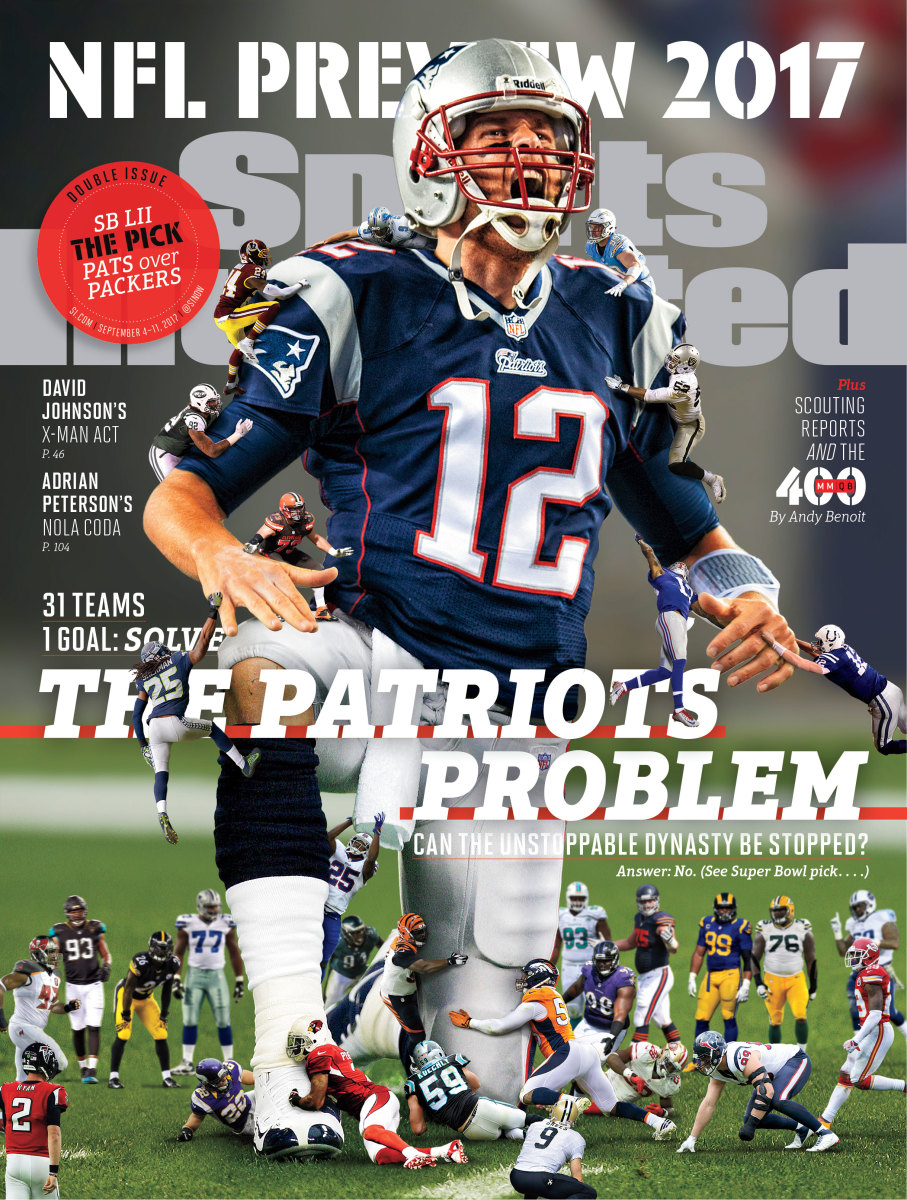
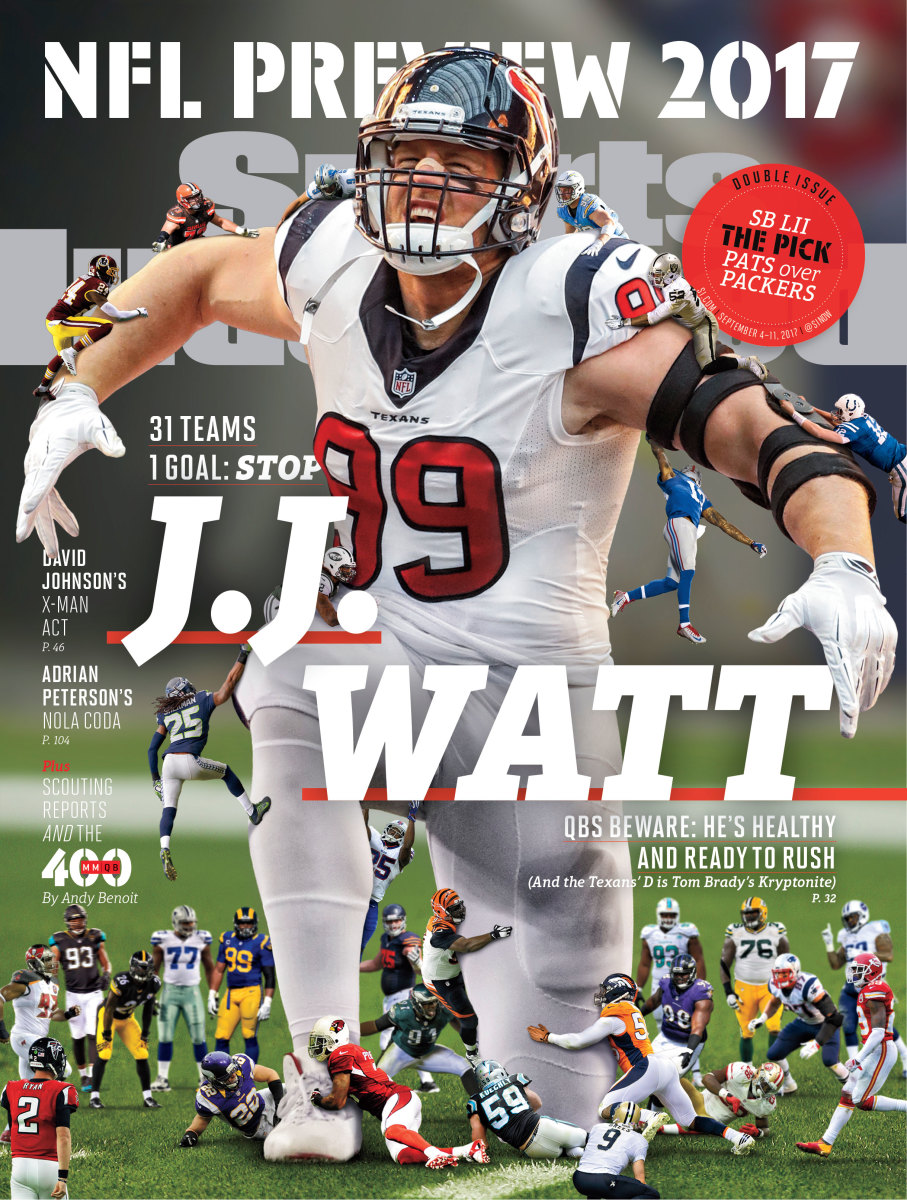
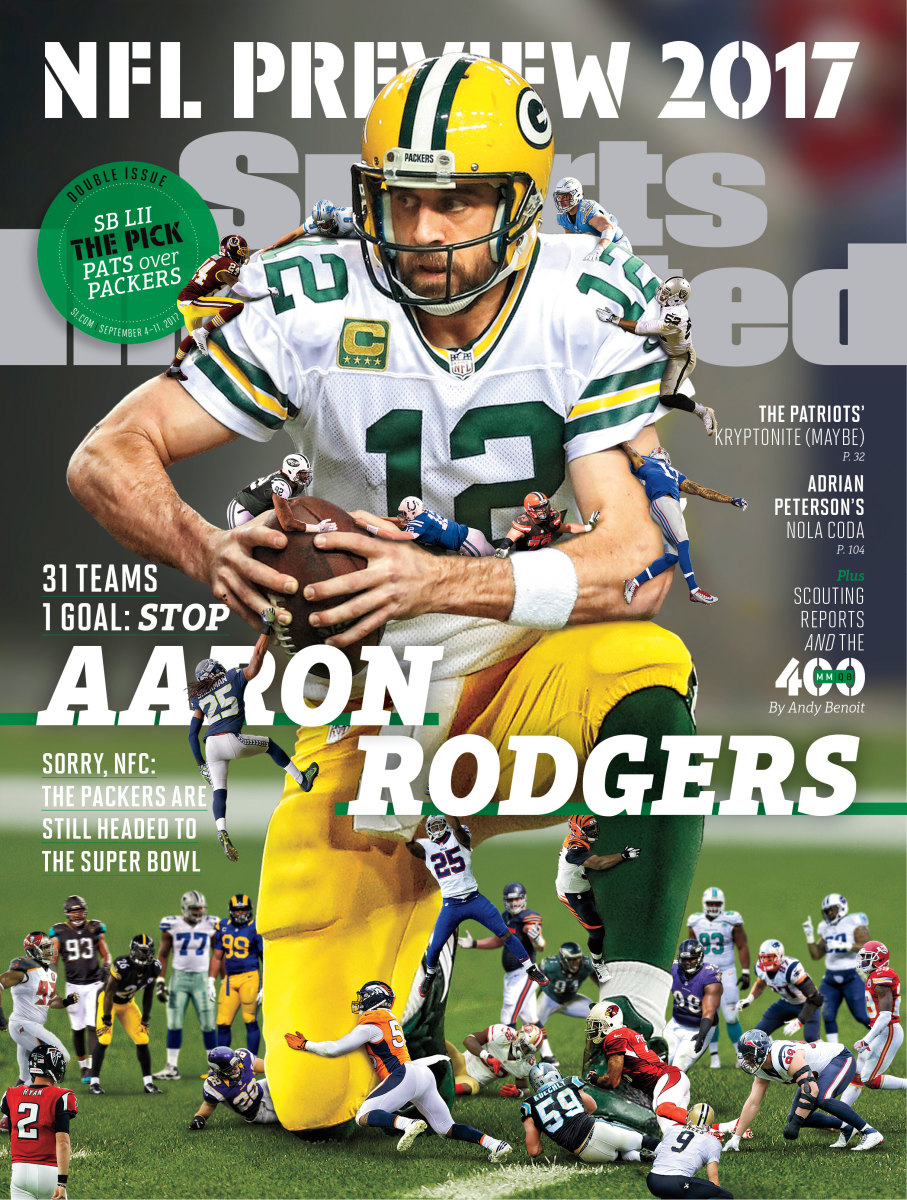
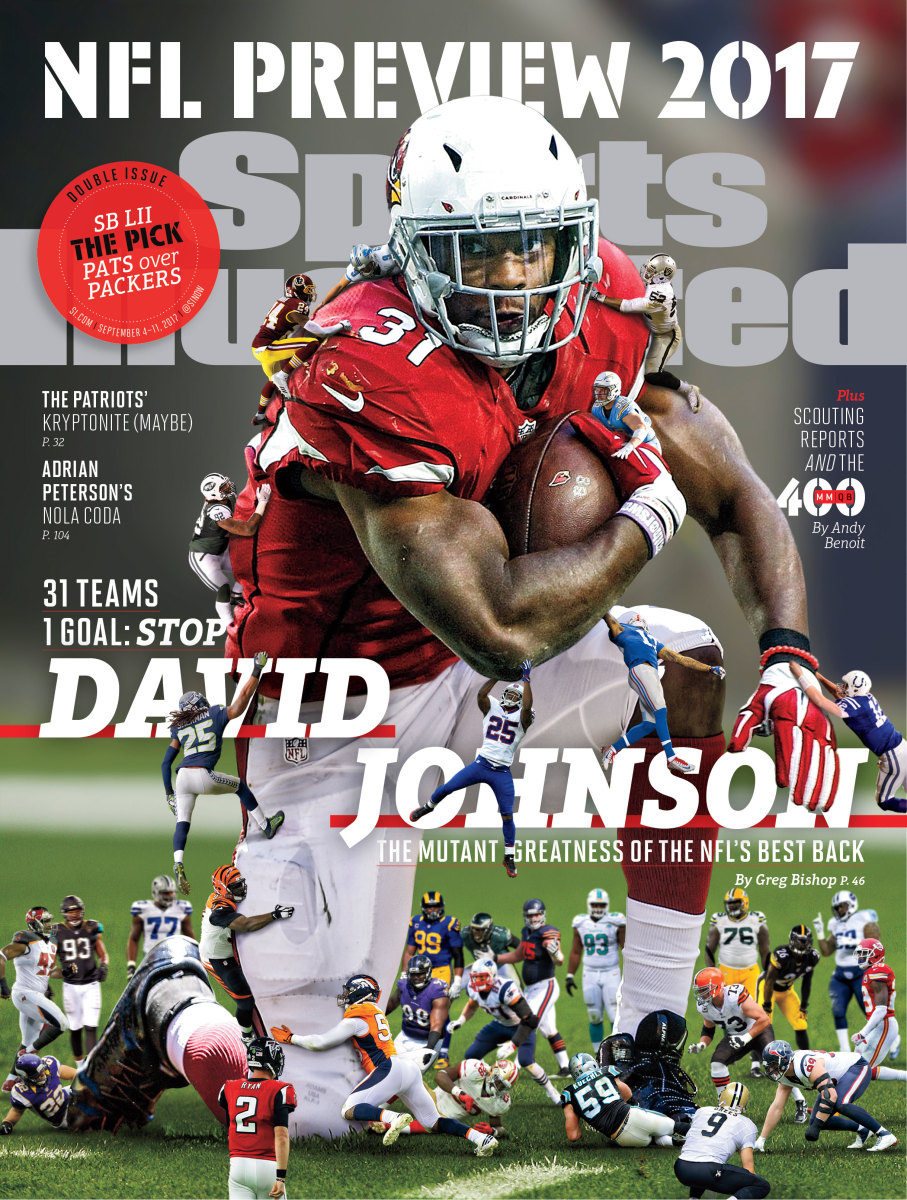
With the recent rise in spread offenses, the NFL has become such a pass-happy league that a D’s only hope is to go on the offensive. “Defenses are becoming just as multiple [or flexible in their arrangement] as offenses,” says Texans coach Bill O’Brien. “Especially on third down.”
For the past two decades, a double-A-gap front—four down D-linemen, plus two additional defenders over the center, one on each shoulder, creating a six-man front against five O-linemen—has been the go-to pressure look for NFL defenses. Longtime Eagles coordinator Jim Johnson introduced the concept, Mike Zimmer (now in Minnesota) perfected it, and you still see it used regularly, including in Houston. But the diamond front is quietly becoming the pressure look of choice for teams that have the personnel to execute it. With some regularity, the Broncos, Lions, Panthers, Patriots, Rams, Saints, Steelers and Vikings used diamond fronts in passing situations last season, while several other teams dabbled in the tactic. No defense, however, employs the front more frequently or more effectively than the Texans.
In order to succeed, a diamond front requires a single pass rusher who can’t be blocked one-on-one. In Watt, Clowney and Mercilus, the Texans have three. “We have a lot of talented guys,” says the most talented of all, Watt. “The ability to put different pieces in different places gives you a lot of multiplicity up front. [You can] wreak havoc that way.”
On the surface, this all sounds simple. Five defenders across from five blockers?Most offensive players have seen this since peewee football. But the diamond’s real complexity shows in passing situations, when those five players start running stunts—or what Mercilus refers to as “games.” At the snap, a given defender might attack a blocker’s shoulder or try to cross over a blocker’s face, creating a lane for another defender to loop in and attack. “We practice those games every single day,” says Mercilus, “so we get the timing down, the rhythm down.”
Those games can put tremendous stress on an offensive line. On any given play against a healthy Texans team, for example, at least three offensive linemen are led to believe presnap that they’re about to block an elite pass rusher. But that pass rusher may relocate at the snap, with a whole new defender appearing. Imagine gearing up to block Clowney—possessor of one of the league’s most explosive and powerful initial bursts—and then seeing him leave . . . only to realize you’re now blocking Watt, the most destructive defensive force of this era.
Even if every blocker recognizes a stunt correctly, blocks must still be executed, often against defenders rushing from unusual angles. And when 300-pound offensive linemen are forced to move their feet and turn their hips, bad things can happen.
“It all comes down to how comfortable we are with each other, having that communication, whether it’s verbal or nonverbal,” says Watt, who’s entering his fourth year playing with Clowney and Mercilus. “Being able to communicate with each other and really having a great feel for what each of us likes. . . .” Watt says this with the stoicism of an Easter Island statue; he’s notoriously protective of trade secrets and he’s not about to compromise his chances of beating the Patriots. “You’re asking for the playbook, man,” he says. “I’m not going to give it up.”
So where did the diamond come from? “Buddy [Ryan] really popularized the five-down look in the early-, mid-’80s,” says seven-time Super Bowl winner Bill Belichick, as good a source as you’ll find on just about any defensive subject. “He played it a lot in his base defense. His thing was really to get Dan Hampton [with the Bears], and then Reggie White [with the Eagles] on the nose. So part of it was the [structure of having] five-down, but part of it was to take the best player he had and put him on the center.”
Ryan applied the diamond concept more against the run than against the pass, as many teams still do. (It’s a sibling of Ryan’s famed “Bear front.”) Where it’s changing the game today is as a sub-package tactic in passing situations. “Back in [Ryan’s] day, you didn’t have the frequent substitutions we do now; for the most part, the same 11 guys were on the field on third down as on first down,” says Belichick. “By the later ’80s, there were more three-receiver sets [and thus] more nickel defenses.
“When I was with the Giants [in the 1980s] we ran five-man out of a 3–4 [defense]. When I went to Cleveland [in the early ’90s] we played a four-man D-line in nickel schemes, but we built a package with a linebacker, Clay Matthews, over the center. We could stem in and out with the linebacker—we could be in five-down, then walk [Matthews] out and be in a 4–2, then back in a 5–1, then in a 4–2. . . .” In the passing game, “five-man changes a lot of protection rules, particularly for the back and the quarterback, especially if you have players on the line of scrimmage who can drop into coverage. If an offensive tackle goes out to block [one of those five players], but then the defender drops into coverage and you blitz up the middle, you create some mismatches.”
Julian Edelman Injury: What It Means for the Patriots
Belichick would know; he still deploys diamond fronts in New England. He goes on, dissertating on five-man fronts against various concepts, reaching all the way to read-option offenses in college schemes—then he grinds to a halt. “I mean, we can talk about this all day,” he says with a smile.
He refocuses. A big key to the diamond front is having coverage defenders begin a play up on the line. That’s where much of the disguise lies. But also much of the risk.
“Instead of being in a 4–2 [alignment] you’re in a 5–1, a one-linebacker defense,” says Belichick. “That gives you fewer people behind the ball. So if you get split, there’s only one guy playing the second level.” A defense could “get split” by a running back who quickly breaks through the line of scrimmage. Or, in passing situations, by a scrambling quarterback. Or by a receiver on a short inside route. Anytime you take bodies from the linebacker level of the defense and put them up on the line of scrimmage, you become more vulnerable to a big play should a ballcarrier quickly or unexpectedly reach open space.
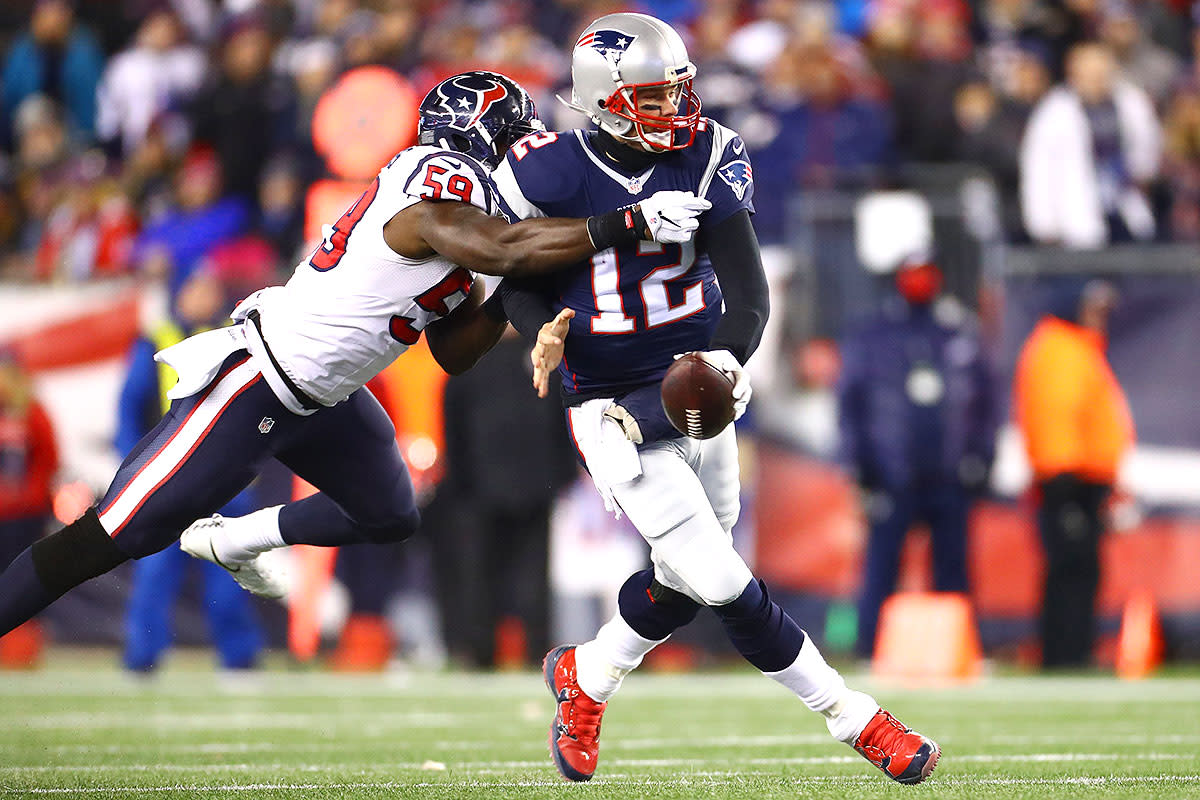
Of course, all defensive schemes have weaknesses. If there were one without a downside, every team would play that way every snap. As aggressive pressure packages go, though, a diamond front is relatively safe. In the popular double-A-gap front, for example, six defenders are up at the line. But it’s rare that all six will rush—if they did, every defensive back would be isolated in single coverage—which means that double-A-gap concepts rely heavily on players being able to drop back into coverage. And that’s not ideal.
“In zone coverage, [those guys] are covering from the line of scrimmage, trying to get back to an area and see guys behind them,” Belichick explains. “That’s all easier to do [if you’re initially aligned] off the ball.”
With one fewer line-of-scrimmage player than in a double-A-gap front, a diamond defense is less reliant on backpedaling defenders. Executing a four-man rush out of diamond, for example, requires only one defender to drop, and that difference—one dropper instead of two—creates more flexibility in coverage. With two droppers, a defense is inclined to play zone; with just one dropper, man-to-man becomes more feasible. (In fact, Patriots receiver Julian Edelman says that “when I hear ‘diamond’ in the chatter at the line of scrimmage, it usually gives you an indicator that there’s going to be some sort of man coverage. . . . Of course, when you publish this, defenses are probably going to change that.”)
Because the Texans are so experienced and effective at playing two-high-safety matchup-zone coverages, a foundation under the O’Brien regime, they don’t always feel compelled to play the man coverage that diamond allows—but it’s an option. Whatever they land on—hybrid-man or zone—they’re fond of eight-man coverages, like the one they used on Mercilus’s postseason sack of Brady. Altogether, the Texans dropped two linemen back in coverage and rushed only three about 30% of the time they were in diamond last season. Dropping two defenders in this instance is less worrisome than out of a double-A-gap look because it creates an eight-man coverage instead of a standard seven-man coverage. Defenders have more help around them.
Jordan Reed vs. the Laws of Physics
Which brings us back to the Patriots. Eight-man coverages are the best way to stymie offenses that “like to run a lot of man-coverage-beating [route concepts],” says 12th-year Texans cornerback Johnathan Joseph. Offenses like New England’s. “It’s hard for the quarterback to read through all those defenders,” Joseph explains. The Texans showed a diamond front and dropped into eight-man coverage six times against New England in January. On those plays they sacked Brady twice and gave up just one completion, for seven yards.
Besides crowding the short area of the field, a defense that drops eight players into coverage also discourages the offense from cushioning its pass protection with extra blockers—a running back or tight end, or both. And when extra blockers are sought? Then the defense can end up with at least two men in coverage for every route-running receiver while a bunch of O-linemen are left blocking air. An offense can’t sustain success this way.
Putting eight bodies in coverage also allows a defense freedom in disguising its looks, and against the Patriots that’s crucial. As one NFL defensive coordinator puts it, “You cannot let Brady get a beat on your coverages before the snap. He’ll kill you. You have to change it up.” Mercilus offers similar sentiments. “With somebody as smart as him, who knows the game inside and out. . . you’re playing against his mind. He knows where the holes are.”
New England works hard to make those defensive holes predictable—everything it does before the snap centers around unmasking the coverage. “We’ll have a motion indicator,” says Pats receiver Danny Amendola. “If you see a guy in motion and there’s a defensive back running along with him, that’s man coverage. If [there’s no one] running with him, that’s zone coverage.” The Patriots can also unmask coverages by how they structure their formations. “We’ll disperse guys in and out of the formation,” Amendola goes on. “We just put a tight end or running back outside.” He smiles. “Not to give away too much of our offense.” (What Amendola is getting at: If Brady has a tight end or back out wide and there’s a linebacker or safety across from him, it means that linebacker or safety followed him there, which tells the QB he’s facing man coverage. If there’s a cornerback across from that split-out tight end or back, it means that corner stayed home; it’s zone.)
• TB12 TURNS 40: Purchase the SPORTS ILLUSTRATED Special Tribute Issue
And so we’re bound to see two chess matches unfolding when Houston and New England meet in Week 3 this season: the Texans dictating matchups with their five-man diamond front, and the Patriots dictating matchups with their receiver alignments. So who’s really in charge?
“That’s an interesting question,” says O’Brien, “and I’m going to answer that out of both sides of my mouth. Sometimes, defensively, we’re just going to put our personnel out there and make our call regardless of what the offense is. But sometimes our personnel and our call is based on the offense. It’s all dictated by, How can we play the fastest?”
Last season Brady got rid of the ball in an average of 2.57 seconds, which ranked 16th out of the 39 QBs who attempted at least 130 passes. On Mercilus’s sack it took the linebacker a hair over two seconds to reach Brady. This play is brought to O’Brien’s attention.
“That’s one of the things about this league,” he says. “It’s not only a chess match schematically; it’s a chess match of evaluating personnel. How can we get our guy [lined up against] a weaker player? I think that’s the ultimate chess match.”
